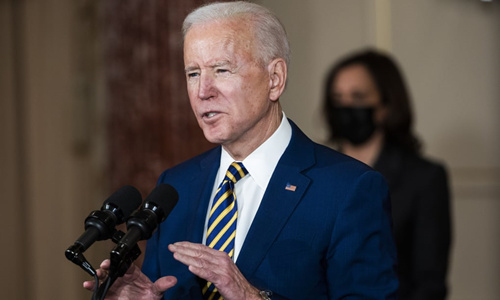April 9th local time, U.S. President Biden released the outline of the first annual budget proposal for fiscal year 2022, amounting to $1.5 trillion.
Of this $796 billion in non-defense budget is a significant increase of 16 percent from 2021, accounting for about 3.3% of the U.S. gross domestic product (GDP). That’s about the historical average of the U.S. over the last 30 years, officials said.
Biden plans to add $20 billion to education systems in low-income areas, $6.5 billion to focus on cancer medical research, $14 billion to combat climate change, $2.1 billion to the Department of Justice to address gun violence, $1 billion to the Department of Justice to promote Violence against Women Act, almost twice the relevant expenditure in 2021. Biden also plans to provide $861 billion to solve the immigration problem at the southern border of the United States.
Biden’s proposal increased budgets for various government departments, with education growing 40.8%, businesses growing 27.7%, health and public services growing 23.1%, and agriculture growing by 16%.
Defense spending will increase by $12.3 billion to $753 billion, an increase of about 1.7%, unlike the previous Trump administration’s prioritizing military spending.
U.S. President Biden’s budget proposal this time includes only discretionary spending, accounting for about a quarter of total federal spending. The full budget proposal, including non-discretionary spending such as Social Security, Medicare, and taxes, will be announced later this spring.



